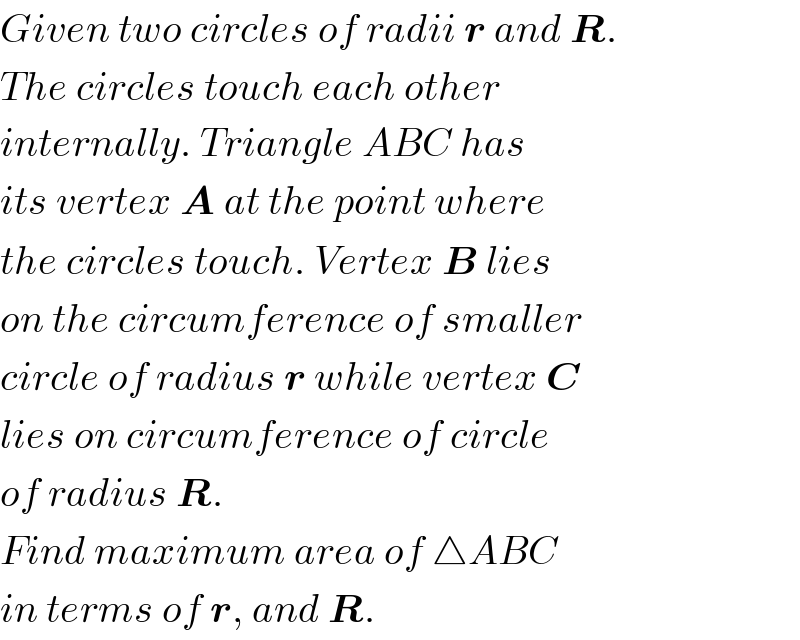
Question and Answers Forum
Question Number 35279 by ajfour last updated on 17/May/18

Commented by ajfour last updated on 17/May/18

Commented by ajfour last updated on 17/May/18

Commented by ajfour last updated on 17/May/18
![A(θ,φ)=(1/2)bcsin (θ+φ) b=2Rsin φ , c=2rsin θ A(θ,φ)=2rRsin θsin φsin (θ+φ) (∂A/∂θ)=2rRsin φ[cos θsin (θ+φ) +sin θcos (θ+φ)]=0 ⇒ sin φ=0,π or sin (2θ+φ)=0 similarly (∂A/∂φ)=0 ⇒ sin θ=0,π or sin (2φ+θ)=0 for our case ⇒ 2θ+φ=π and 2φ+θ=π ⇒ θ+φ=((2π)/3) So θ=φ=(π/3) A=(2rR)(((3(√3))/8)) =((3(√3)rR)/4) .](Q35287.png)
| ||
Question and Answers Forum | ||
Question Number 35279 by ajfour last updated on 17/May/18 | ||
 | ||
Commented by ajfour last updated on 17/May/18 | ||
 | ||
Commented by ajfour last updated on 17/May/18 | ||
 | ||
Commented by ajfour last updated on 17/May/18 | ||
![A(θ,φ)=(1/2)bcsin (θ+φ) b=2Rsin φ , c=2rsin θ A(θ,φ)=2rRsin θsin φsin (θ+φ) (∂A/∂θ)=2rRsin φ[cos θsin (θ+φ) +sin θcos (θ+φ)]=0 ⇒ sin φ=0,π or sin (2θ+φ)=0 similarly (∂A/∂φ)=0 ⇒ sin θ=0,π or sin (2φ+θ)=0 for our case ⇒ 2θ+φ=π and 2φ+θ=π ⇒ θ+φ=((2π)/3) So θ=φ=(π/3) A=(2rR)(((3(√3))/8)) =((3(√3)rR)/4) .](Q35287.png) | ||